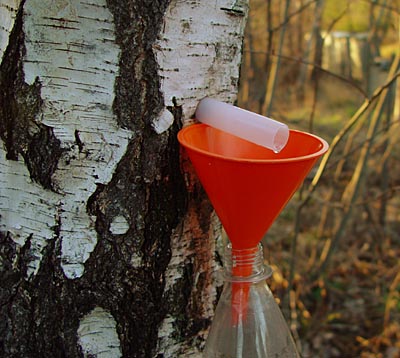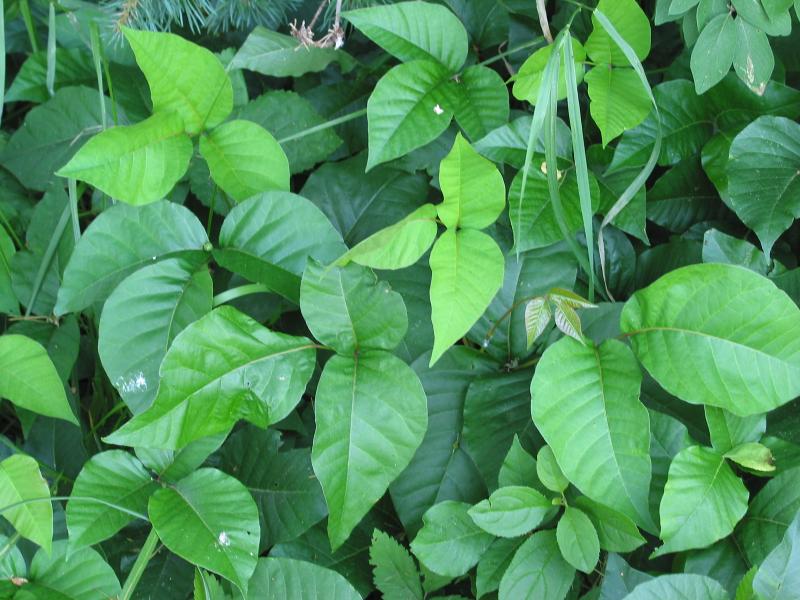Announcement
Collapse
No announcement yet.
Wild Edible Plants
Collapse
X
-
Re: Wild Edible Plants
Beautiful pics Artashes, I also have been eating aggregate berries like the salmon berry these days, particularly the blackberries from my dad's garden... They are humongous, and terribly delicious :P About 2 inches by 1 inch size, juicy... You wanna just eat one to savor it's magic and remember it all day long.
I love the humming bird, what a neat find.
I'm gonna talk about the uses of pitch (resin) from trees, which are accumulations of sap, often forming on a wound on the bark.
I have a fir tree in front of my house, you know, classic Christmas tree:

Last summer my neighbor who shares the front lawn with my house wanted to cut the lowest branches from the tree, since they got really long and were covering a lot of ground. So we agreed to, and this year on some of the wounds from last year's cuts, there are globs of pitch. Last week I started collecting some to use on my swollen pinky from a soccer injury, and wrapped it with a leaf to keep its stickiness from touching the rest of my hand. It stimulated my immune system and increased blood flow in the area and helped reduce the swelling faster after a few hours. But it's rather inconvenient since after a while the oozing resin will saturate your bandage and seep out.
Much better is using it for cuts:

It disinfects, and quickly stops the pain of infection. Just put a dab of it on and your on the fast lane to healing.
This I found interesting, since tree sap is flammable:

I imagine pine sap works better than some others, but I'm sure you can try this with lots of types of sap. It's rather easy to collect. Just go to an area with conifers, public areas like parks, or the front lawns of some government buildings... You'll eventually find large globs of sap, and you can remove them by the handful to collect into a bucket. When you have enough, you can melt it in an old pan you won't really use for cooking, meanwhile finding an empty yogurt container and poking a hole at the bottom to pass a thread acting as a wick for the candle flame to burn on, and tying a knot. Finally pour the melted pitch into a yogurt container, and voila, you have a candle
Fir sap can act as a cough syrup, take a little bit though, like a dab on your finger.
Spruce sap binds well enough with itself that you can chew it like gum.
If you like the taste of the forest, you won't be disappointed, but it will stick to your teeth somewhat! Just keep chewing until you're fed up, but it'll last a while :P
Do not use sap from the yew, it's highly toxic, like its needles.

Birch sap, like Maple sap, are very much edible (or should I say drinkable, they're mostly water!) People make syrups obviously by boiling them, reducing the water content so that the solution is 60-65% sugar. Collect them by tapping the trees, and hanging a bucket. They can serve as a source of (sugary, caloric) water in a survival situation, and you can get several gallons out of a tree per day during early-mid spring and the sap travels down the tree. But any time really when the temperature was cold the preceding night and warm the next day will promote the sap from flowering out an aperture made in the tree.
Here's a pic of Birch being tapped, since this is much less common than maple. It is a common practice in Alaska I've heard, and in Russia and North Eastern Europe in general, where beverages and syrups of it are sold commercially and have been long part of local tradition.

Another pic of Birch sap being collected from a cut branch sloped downwards into a bottle (taken from http://en.wikipedia.org/wiki/Birch_sap) :

Comment
-
Re: Wild Edible Plants
I like the descriptions on your polar bear pics, "any bxtch can pull a trigger" :P, and of the humming bird ones.
I started a page on facebook called Plants/Wilderness Knowledge, if you would like to join in it, please let me know. Members are encouraged to contribute by posting pictures, comments, and just generally sharing in the interest
In the meantime, I'll copy/paste my first plant entry from there:
Originally posted by "Plants/Wilderness KnowledgeLamb's Quarters
(http://en.wikipedia.org/wiki/Chenopodium_album)
We'll start with some edible greens today that you'll commonly find outside,
be it an urban setting or a field, and of course all those gray areas in between like
vacant lots, and possibly even your garden or lawn.
Familiar to us already in the Amaranthacae family are Spinach and beets, but in recent years
Quinoa and Amaranth seeds have grown in popularity as a substitute for wheat and rice
as an energy food staple. But did you know that Quinoa is a sister plant to Lamb's Quarters,
(Chenopodium Album) one of the most common weeds you can find (and eat)? It'll grow anywhere where there's
plain old soil, so check the picture out, and search others on google images, its just
waiting for you to find it within the block you live in.
Of course, there are some concerns, namely that the pollen of this plant is an allergen
to some people, causing hay fever like symptoms, so maybe you'll wanna find out if you
belong to that minority, and be all "Oh, so it was you! YOU!!!". And if you want to pick
some of the leafy greens to eat raw in a salad, I'd recommend washing them really well, especially if it's
near a roadside. The mature seeds are also edible, though if you collect them, soak them
like you would Quinoa, to remove first the indigestible saponins.
Oh, I was blown away when I read its nutrition rating about the leaves, boiled with salt:
I actually love this resource, it has a very comprehensive database on all varieties of meal items,
and really highlights their stats for protein completeness, inflamation factor, victamins,
filling-ness vs nutrition. Lamb's Quarters, familiarly scores with total protein completeness,
just like its sister, Quinoa. Does that not kick ass? The only drawback is that 1 cup of
the chopped leaves will give you 12% of the average person's protein needs, and eating too
much of anything is bad. But as a part of a balanced meal, it works great!Last edited by jgk3; 09-03-2012, 05:23 AM.
Comment
-
Re: Wild Edible Plants
Jeff I really like your posts and this thread idea.
Your posts are information packed with much education to be had. Thanks.
I liked Retro's post also and wish more participation as a group.
My skills and knowledge are not up to your level plus my work days are so long I don't think I'll be able to contribute much. Also poor computer skills are inhibiting my participation. Never the less your posts and others are much appreciated and enjoyed.
I've been meaning to say that I find your knowledge on starting a fire the old fashion way highly interesting. Anything you through out on that topic will certainly be read with great interest on my part.
Thanks again for interesting and informative thread.
Artashes
Forgot to say yes I'd like to join
Comment
-
Re: Wild Edible Plants
Thank you Artashes, but don't be so hard on yourself, you're posts show a life filled with adventure, treasures and woods experience that I admire very much. I am sad to hear that your days are long now and I really do hope that you'll find more free time to reconnect with this passion.Originally posted by Artashes View PostJeff I really like your posts and this thread idea.
Your posts are information packed with much education to be had. Thanks.
I liked Retro's post also and wish more participation as a group.
My skills and knowledge are not up to your level plus my work days are so long I don't think I'll be able to contribute much. Also poor computer skills are inhibiting my participation. Never the less your posts and others are much appreciated and enjoyed.
I've been meaning to say that I find your knowledge on starting a fire the old fashion way highly interesting. Anything you through out on that topic will certainly be read with great interest on my part.
Thanks again for interesting and informative thread.
Artashes
Forgot to say yes I'd like to join
I enjoy any and all discussion
My group is on facebook, so if you have an account, just send me your contact info by private messaging.
Comment
-
Re: Wild Edible Plants
I've heard of face book a lot via media output I'm bombarded with in these modern times but actually know nothing about it. It's not one of the squares on my "screen".Originally posted by jgk3 View PostThank you Artashes, but don't be so hard on yourself, you're posts show a life filled with adventure, treasures and woods experience that I admire very much. I am sad to hear that your days are long now and I really do hope that you'll find more free time to reconnect with this passion.
I enjoy any and all discussion
My group is on facebook, so if you have an account, just send me your contact info by private messaging.
Have to go
Comment
-
Re: Wild Edible Plants
I wrote this not too long ago, this is NOT an edible, this a plant to be very careful about and avoid to the best of your ability, and I explain how and why.
Originally posted by Plants/Wilderness KnowledgeSafety with Poison Ivy (http://en.wikipedia.org/wiki/Toxicodendron_radicans)

Well, we all have heard of it... but all I knew about it in the beginning was
that it has three leaves, grows in forests and has scary effects on skin! Hey, I've
heard worse, I know a friend I showed it to, growing
on a fence by the train tracks...
"What! How could the city let it grow?", to which I replied, "Well they put signs
in front of a patch if the public travels by a lot, warning people and helping them
to identify it." Alarmed, he exclaimed "But can't it kill you?".
Haha... I reassured him that no, the common risk is an awful skin irritation and boils
that can last for weeks. But you know, my friend wasn't entirely wrong. If you read
the Wikipedia article, in the section called "Effects on the body", there is a risk
for some individuals of anaphylectic shock, an extreme allergic response that requires
immediate medical attention and can be fatal. So there are risks with this plant,
and one should definitely learn to identify it well.
Three smooth-edged leaflets, ending at a point. The middle leaflet has a slightly
longer stem than the other two, which are at its flanks. Though not a true ivy,
it climbs on trees with vines that are furry. This is especially important for
tree climbers to know about, since these are extremely toxic to the touch. On the
ground, you will often find it growing in large patches, because it can spread through
an underground root system (rhizomes), along with its many green or white berry-like
fruits that ripen by late summer.
The active compound that causes these reactions is known as urushiol, a sap released
when parts of the plant are damaged. This sap can remain active for years on dead
foliage, so don't play around with them, and do not burn any part of the plant, since
urushiol will be released into the air, causing a very painful allergic reaction to
the lungs and can lead to death.
If you are allergic to mangoes, it might surprise you to know that it is induced
by a substance very similar to poison ivy's urushiol, and that cashew shells also
exude their own related toxic substance... All three are part of the Anacardiaceae
family, with several species with a sap toxic to humans. If you've heard of poison
sumac before, this too is a species of the same family, growing wild and notorious
for the same type of toxicity.
If you search online for remedies to poison ivy, you might bump into a plant called
xxxelweed, whose sap is well reputed to combat the effects of urushiol. If it doesn't
instantly eliminate the symptoms, if used topically every day it's supposed to speed recovery
drastically. My issue with all the praise of xxxelweed arises when people say it
grows in the same habitat as poison ivy. While both enjoy wooded areas with
light shade, xxxelweed does not grow well in dryer areas. Poison ivy can. So
the range of the two plants overlap, but unfortunately xxxelweed isn't everywhere
where there's poison ivy.
This is why it's best to remember the plant's apparence by heart and avoid it
before you find yourself walking through a patch in the forest or in a field.
Removing poison ivy from a lawn by mowing over it can be a hazard even if
you don't touch it, since vigorously cutting the plant will release urushiol into
the air. For tips to successfully and safely eliminate this weed, I highly recommend
the article here: http://landscaping.about.com/od/pois...ing_poison.htm
Comment
-
Re: Wild Edible Plants
Sow Thistle (Sonchus):

Here's a great edible green that at first glance, you might think is a dandelion. Its flower is very similar, and even its younger stage of leafy growth leaves (no pun intended) me wondering whether or not it's its more famous cousin hated by green lawn enthusiasts.
It grows as a noxious weed in gardens, empty lots, fields, roadsides.... But it is of interest to gardeners like me, enjoying a plant that attracts both aphids (to leave my vegetables alone) and, when allowed to bloom, hoverflies (to eat the aphids). Plus, I periodically pick some of the fresh leaves to throw in a boiling pot and enjoying like spinach.

This is the variety that I allowed to grow rampant on the left edge of my garden, and nowadays its become well established in my lawn! It spreads through its nitrogen-hungry creeping roots. I found this out today as I was researching this plant for today's entry and Eureka! Now I know why my tomato plants growing nearest to them were stunted, hardly yielded any tomatoes! A great demonstration of nitrogen deficiency. Next time I'll just let them grow in my lawn and save the garden soil for less aggressive plants.
If they grow in my garden, uprooting them is very easy in loose soil, plus you don't have to worry about fragments of roots in the soil pushing up new leafy growth. On lawns, it can be contained by mowing them once a week, keeping them from sending up flower heads from which to spread, and halting their root development.

The spiniest, spikiest variety: Sonchus Asper. They are the most reminiscent of true thistles. The first image was Sonchus Oleraceus, which is the best tasting, tender member of the genus. The second image was Sonchus Arvensis, common in fields. All of them taste good to me after simmering them for 10-15 minutes, throwing in some chopped onions and a diced garden tomato. I like to use about half an inch of water to cook them.
Like Dandelion, Sonchus has diuretic properties, while can be helpful to ease an upset stomach, but you should consult a physician if you have a medical condition or are taking medication. If you've already been given water pills to help pass a kidney stone for example, you'll amplify this effect with more diuretic foods in your diet which perhaps is not recommended.

If you don't cook it thoroughly and consume it, the (usually bitter) milky white sap also has a mild analgesic property, which can help soothe pain and relax your mind to help you sleep. This is done by contracting your blood vessels, so your heart rate goes down.... not a good way to start your morning! Be aware that some people are allergic to precisely this type of sap, found also in other members of the plant family Compositae. To read about this, consult this page: (http://dermnetnz.org/dermatitis/compositae-allergy.html). As with the diuretic effects, one should be careful about whether the sap is safe for them medically.
When trying new plants, you must always beware of allergies, so always have very little amounts unless you are certain of its identity and know that it's generally safe.
The name 'Sow' thistle apparently refers to how it was fed as fodder to sows (female pigs) because the milky sap was once believed to promote better milk production for their piglets. Grazing animals tend to prefer this plant to grass, and it is a favorite of hares and rabbits. The genus name Sonchus means hollow, refering to its hollow stem, through which the milky sap flows.
Here's a video to help with identification and culinary uses of the Sow thistle by Greene Deane:
His knowledge and lighthearted skill in converting this weed into a simple, delicious and nutritious Mediterranean style dish by the end of his presentation as inspiring as it is encouragingly easy Last edited by jgk3; 09-25-2012, 07:33 PM.
Last edited by jgk3; 09-25-2012, 07:33 PM.
Comment
-
Re: Wild Edible Plants
Dandelions.... I avoided discussing thee from the very beginning, but you are so useful for tasty meals, nutrition and medicine that I must break the silence. I'll start with an article on its use in natural medicine: the sap, applied to warts is very effective in triggering a localized immune response. Since common warts are caused by a virus, it is best to kill off the infection rather than to merely remove the wart by surgical means, as it can regrow in the later case. Note however that dandelion sap is a kind of latex for those who have an allergy.
Article: http://www.ehow.com/way_5692327_dand...t-removal.htmlOriginally posted by ehow: Dandelion Wart Removal
Dandelion Wart Removal
By Elizabeth Hamilton, eHow Contributor
Dandelion, or Taraxacum F. H. Wigg (Compostiae), belongs to the daisy family. This humble weed consists of the capitulum, the yellow-flowering top, and the bottom portion, of green rosette leaves. The dandelion, which has had a bad reputation as a pesky weed, can now be regarded with more esteem. Dandelions can be used in various ways. One is the application of its white sap to warts as a natural means of removal.
Symptoms
Warts are diagnosed by their location and appearance. They can appear as light or dark skin around a lesion. Flat, smooth or small lesions can appear on the upper and lower body area as well as the face. Rough growths can appear under or around the fingernails and toenails, and even on the soles of the feet, which can be painful. Warts can also manifest themselves as lumps.
Causes
Warts are caused by viruses. There are different types of warts. Common warts can appear anywhere on the body, although typically the hands. Flat warts are mostly in the facial area. This type is most common in children, less so in teenagers, and is rare in adults. Genital warts are found around the genital area and can even be found inside the body. Warts on the soles of the feet are plantar warts. Subungual warts are under the fingernails and toenails.
Treatment
Dandelions naturally contain a latex-type sap known as a phytochemical. The milky-white sap belongs to the luteolin class, and is known to be toxic to human cells. Applying the sap to the wart may reduce cell proliferation, acting as a natural remover. The sap may be gathered from cut roots, stems or leaves. Apply it to the entire wart one to three times daily for five to seven days. The wart can then be removed safely, as it will slowly detach from the skin.
Warning
Wash hands carefully after touching warts. Avoid direct contact with warts on other people, as this can spread the virus. Warts can occur in a person with a weakened immune system. Therefore, causation should be investigated before starting treatment. Check allergies to any form of the dandelion before applying the sap. Consult a physician if you are unsure about any unnatural growth you observe,
especially in the genital region.
Comment






Comment